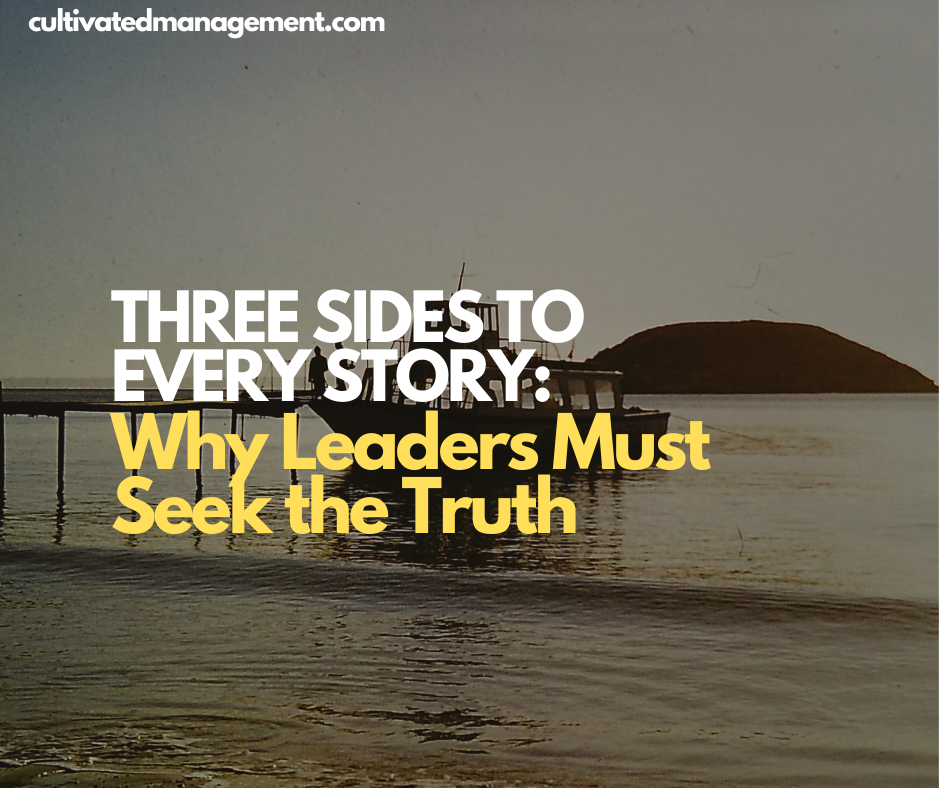
It’s not uncommon to find leaders making decisions that fundamentally affect the business (and people) based on subjective hearsay and opinions.
Often, it comes down to who they listen to, who they trust, and sometimes simply who speaks with the most confidence. But as Edward Deming reminded us:
“Without data, you’re just another person with an opinion.”
Deming wasn’t dismissing opinions entirely — they matter — but evidence and data matter more. Yet not a single working day passes in most businesses without decisions being made on the back of assumptions, gut feel, or personal bias.
One of the hardest situations for any leader is when two accounts clash. Conflicting stories, subjective observations, heated opinions — and you’re expected to decide. Was it a colleague upsetting others? A release gone wrong? A budget meeting that spiralled? The scenarios differ, but the challenge is the same: where’s the truth?
As I learnt as a journalist, there are always three sides to a story:
- Their side
- The other side
- The truth

It’s the truth we’re after. Always. The evidence, the behaviours, the actual results. That’s the rock we can build on — the stepping stone to an informed decision.
The trouble is, truth is hard to find in workplaces where mistakes are punished, reflection is rare, and blame is the norm. In those cultures, truth gets buried under misdirection, fudged numbers, “watermelon reporting” (green on the outside, red on the inside), and a host of other behaviours designed to avoid blame.
And when you move forward from a false foundation, you only compound the problem.
So what can we do? Strive for the truth, even when time is short. You’ll never have perfect data, but you can dig for what matters.
Take that meeting that erupted into conflict. Don’t just weigh up stories — ask: what was actually said? How was it said? What behaviours were observed? What impact did it have? Do we need training, feedback, or a performance conversation?
Or a release that broke the live system. Why did it happen? Was it a missed step, a genuine human error, or a systemic weakness waiting to repeat itself? How long did detection and rollback take? What safeguards were skipped?
Or a marketing campaign that flopped. Did we have solid data suggesting it would land? How much did it cost? Why did it fail? What was the consequence — and what can we do differently next time?
In every case, the question is the same: what actually happened?
Listening to all sides matters — but don’t mistake stories for truth. People see and hear what they want. Perspectives are coloured by fear, bias, or just human difference. As leaders, our job is to cut through this, find what’s real, and move forward from a position of clarity.
And culture plays a huge role. If mistakes are punished, truth will always hide. Instead, show people you make mistakes yourself. Share what you’ve learnt. Encourage ownership and growth by asking: what could you do differently next time? Do a root-cause analysis. Provide feedback. Train. Improve.
And never forget: every mistake under your leadership is your responsibility. Not in a blame sense — but because leadership sets the conditions. Was it the wrong hire? Inadequate training? Lack of space to improve? Too much pressure, or too little listening?
The truth is always hard to get to — but be wary of acting on a single side of the story. It’s rarely accurate.
Good journalism is about finding truth in the mix of opinions, observations, and beliefs. Good leadership is no different.
There are always at least three sides to a story: their side, the other side, and the truth.
Our job is to uncover the truth safely, creatively, and with insight — so we can learn, move forward wisely, and build teams where honesty is never punished.
As the Stoics would say: the truth never hurt anyone.
